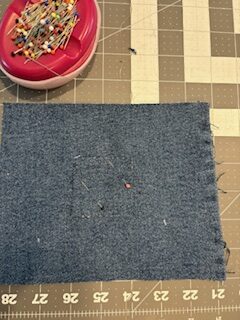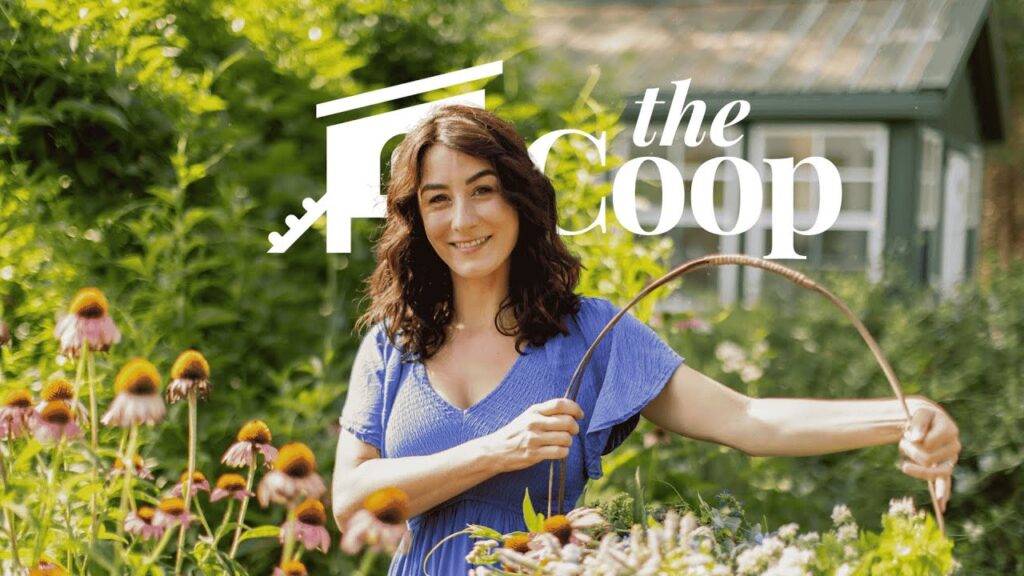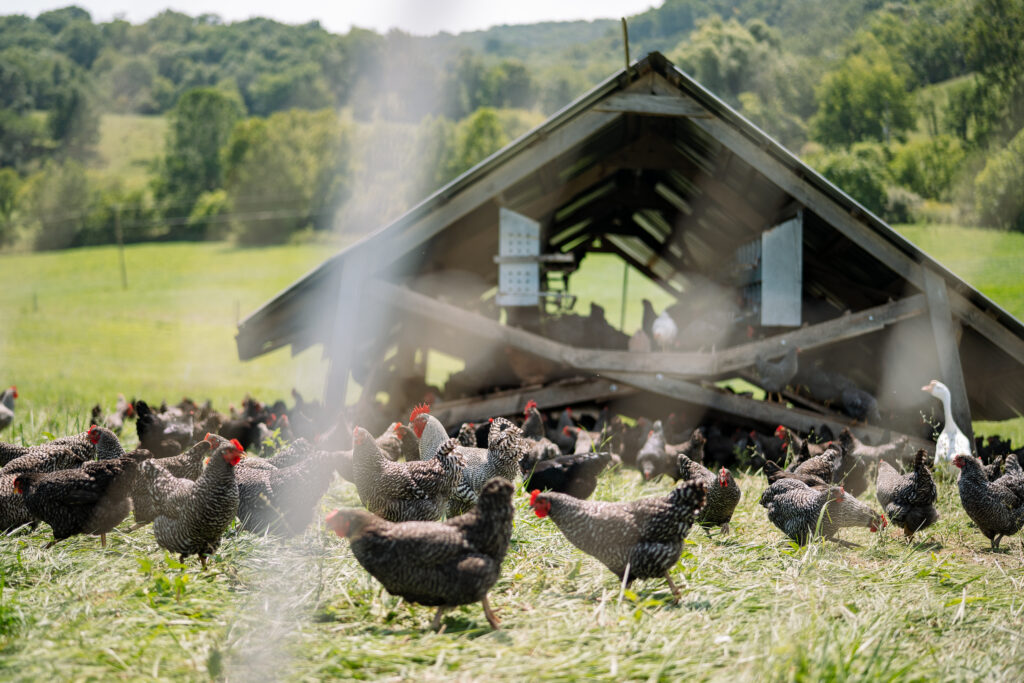In 2017, Peter Wohlleben’s acclaimed book The Hidden Life of Trees took the world by storm, beautifully articulating the community that exists among trees, highlighting their mutually beneficial partnerships with the unseen realm of mycorrhizae. Although this was not new information to the scientific community, much of the western world was shocked to discover that trees, plants, and indeed all living things enjoy the luxury of existence not in a vacuum, not isolated from all their neighbor beings, but in a deeply enmeshed community; a hustling, bustling shared home and marketplace comprised of interconnected creatures and “wee beasties” of all kingdoms and taxon.

For readers who don’t know, there is a vast difference between a shovelful of sterile, store-bought garden soil, a shovelful of dead agricultural field dirt, and a shovelful of rich, tufty soil from a healthy forest floor. There is a lot to this difference, but for the most part, it is characterized by the presence (or absence) of life—a teeming microbial community, a world all its own, vast in its diversity. Every scoop has a different fingerprint, one from the next. The microbial community thrives on decaying organic matter, plant and animal debris, and the exudates and dead bodies of the microbes themselves. The smaller-than-insect population of the community can, for our purposes, be subdivided into bacteria and fungi.
People are becoming more and more familiar with beneficial bacteria, due in part to the resurgence of fermented foods, probiotics, and general awareness of the gut microbiome and its role in human health. The fungal community, however, remains more or less shrouded in mystery. It makes sense, considering how much of its life cycle occurs in the dark underground, completely out of sight and out of mind for us surface-dwelling neighbors upstairs. It is upon this unseen, fungally-dominated subterrain that we intend to gaze for the following thousand-some-odd words.
Journeying Underground
Do you remember The Magic School Bus book series? That’s kind of what we’re going to do here. We’re all going to pile into Miss Frizzle’s big yellow albatross of a literary device, shrink down, and get up close and personal with what lies beneath our feet.
All aboard, buckle up! Now shrinking down, down, down to the size of a nematode, and away we go!
Our first stop: a young tomato plant, growing steadily in a pot of purchased garden soil. The seed was germinated with care, the seedling fastidiously tended and hardened off, now transplanted into a nice fluffy pot of organic, bagged garden soil. You know, the kind with the white poofs of perlite, just enough nitrogen fertilizer, and maybe a bit of coconut coir for structure, or sand for drainage. Let’s ease this bus down into the soil and take a look.
It’s dark, so we activate our night-vision goggles. Man, it is eerily quiet, like empty brick-and-mortar, the restaurant just leased with no cooking or gathering underway. Yes, the roots are growing. Yes, they are gathering from the NASA-style nutrient packs tucked away in the soil—but they are all on their own, and the only resources they have access to are those immediately accessible to the roots, within a few microns. Further, due to their sheltered upbringing, they have a very small, narrow view of the world.
They’ve heard a bit of talk of the wildlife beyond their container walls, its riotous parties of decadent, sometimes misbehaved characters, but they’ve only met a few wee beasties here and there. They stare, wide-eyed, not knowing how to engage and what to do with the few creatures that begin to seek residence in their neighborhood. They are unable to effectively build relationships with these strange, foreign organisms, and if one of ill-intent arrives, the tomato plant is not prepared to defend itself against the tactics of this strange, new, formidable foe.
Bottom line: now you have yourself a very wimpy plant, prone to malnutrition, dependent on your artificial crutches of fertilizer, and—if the going gets tough—pesticides and other time-and resource-consuming products and chores. You have germinated yourself a plant that is wholly unequipped to care for itself in a real-world environment. And if you want it to bully through and bear fruit, you’re gonna have to do the dirty work. Hope you didn’t have any other big plans, because this is one needy plant baby.
Moving along… Our second stop: dead agricultural dirt.


Land of the Dead
Pictured below is dirt from our North 40 acres, the season after we took it out of wheat production, before we started running animals through it. This could just as easily be dirt from a pristine suburban lawn as a Kansas wheat field, mined to exhaustion for the last century. The deal is, when you till or plow every year, spray to kill all but one type of plant, spray to temporarily spike nitrogen, and spray to kill bugs, this is what happens. Everything living dies, and all organic matter, stockpiled for millennia, gets washed away.
This lifeless, agricultural dirt is often comprised of high levels of clay, sometimes sand, and little else. Indeed, this dirt at our place has the distinct qualities that could make a lovely adobe brick. It’s hard, impermeable, solid, and inert—great for building, horrible for growing. Imagine being a root trying to grow in this substance. If it’s hard to imagine, go kick a brick wall, repeatedly. That’ll give you an idea. If you make it through, I’m impressed (though not responsible for any injuries).
And now, for our finale, the culmination of our teeny tiny tour, we will visit a tomato plant growing in rich, riotous, lively soil; verdantly fecund, teeming with movement, pulsing like a nightclub. Look to your left and right, and you’ll see a staggering diversity of tiny beings ascending and descending a myriad of scaffolds in their haste. Birth, life, death, consumption, trading, negotiations, fights, marriages—all unfolding before our very eyes.
Exploring the Soil Superhighway
Below us, a highway system of fantastic complexity, moving in all three dimensions. It is white-ish, fuzzy, and tiny in its width. It gathers around itself a collection of resources—”food”— which it digests outside of itself, breaking down materials into their constituent parts: nutrients, enzymes, and sugars. These then go speeding along the superhighway system called the mycorrhizal network. Let’s lean in and get to know it a little better.
The word “mycorrhiza” combines “myco” (related to fungi) with “rrhiza” (pertaining to plant roots). Therefore, it is not simply the strands of fungus in the soil (called “mycelium”), nor is it the root structure of the plant alone. Rather, mycorrhizae can be understood as the symbiotic relationship between fungal mycelium and plant roots, as well as the many dynamic effects of their relationship on the surrounding soil web community.
We drive around for a bit, trying to find the tomato roots in such a chaotic place. Suddenly, the bus screeches to a halt. Before us is the terminal end of a root, exuding that unmistakable tomato-y smell. Where our mycorrhizal highway intersects with the root, the wildest things are happening. The root is expelling candy; sweet, sugary goodness manufactured in the leaves up above by binding atmospheric carbon dioxide, mixing it up with some water, and converting it to simple sugars like fructose and glucose via photosynthesis.
The plant then sends some of that candy down to the roots to exchange it for other things that it needs to grow and bear fruit. This is where it interacts with our mycorrhizal superhighway. It’s a bit of a barter system, or a molecular poker game: “I’ll see your glucose, and raise you nitrogen and phosphorus.” But our fungal friends bring much more than that to the party. According to one PubMed study, they assist the plant by “regulating nutritional and hormonal balance, producing plant growth regulators, solubilizing nutrients and inducing resistance against plant pathogens.”1
As we conclude our tour, I present to you a choice, dear gardener. What do you think?
- Pot number one: grow in sterile, store-bought potting soil.
- Pot number two: grow in dead dirt.
- Pot number three: grow in living, mycorrhizal-rich soil where your plant can take care of itself, get its own nutritional needs met, and protect itself from any kind of pest or disease onslaught because it is part of a rich mycorrhizal nutrient and immunity superhighway!
To me, the answer is obvious. For those who are convinced, we shall proceed to a few practical ways to put mycorrhizae to work in your own garden.
How to Make Mycorrhizae Work For You
When it comes to fostering beneficial mycorrhizal networks in your own soil, it’s as much about what not to do as it is about what to do. While you’ll see there are some things you can actively do to help things along, you will also benefit simply by letting nature do its thing.
Soil Mechanics
- Stop tilling. It’s like a slasher movie for mycorrhizae.
- Use a broadfork to loosen/aerate soil without destroying soil life and mycorrhizae.
- Use plants to “till” and aerate the soil (tillage radish and other large-rooted annuals).
- Use succession planting, i.e. plant bulbs into potato beds after harvest.
Soil Microbiology
- Stop using herbicides/insecticides/fungicides.
- Use compost to add fertility, suppress weeds and disease, and retain moisture.
- Learn to tweak compost toward the fungal end of the spectrum when appropriate.
- Throw a shovelful of healthy forest floor soil into your garden bed.
Compost Tea
- Use compost tea as a soil drench or foliar application for fertility and pest/disease resistance.
- Use fungal compost tea as a foliar application for a better-than-organic fungicide replacement in your orchard and fruit trees.
- Throw a couple cups of healthy forest floor soil in your compost tea.
Adding Mushrooms
- Inoculate your wood chips with King Stropharia mushroom spawn. Help your plants while harvesting delicious, edible mushrooms!
- Bury spent substrate from mushroom farms in your garden to let it fruit again, and again, and again.
- Inoculate bare-root fruit trees with mycorrhizal fungi before planting.
- Line your garden beds with inoculated shiitake logs.
Hugelkultur
- Fungi love the wood in the middle, and your plants love the fungus!
- Use wood debris at the base and in the core of your raised bed garden beds.
- Use wood debris in a trench below your in-ground garden beds.
Animal Support
- Inoculate pasture or animal GI with nematophagous fungi (like Duddingtonia flagrans) for parasite control.
- Use wood chips inoculated with King Stropharia around your bee hives for bee food and improved immunity.
Works Cited
- Nadeem, Sajid Mahmood et al. “The role of mycorrhizae and plant growth promoting rhizobacteria (PGPR) in improving crop productivity under stressful environments.” Biotechnology advances vol. 32,2 (2014): 429-48. doi:10.1016/j.biotechadv.2013.12.005 https://pubmed.ncbi.nlm.nih.gov/24380797







Leave a Reply